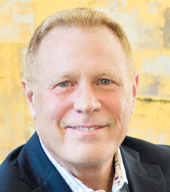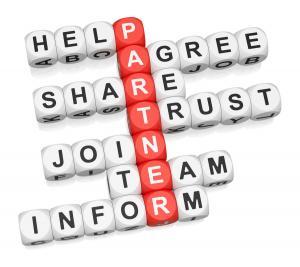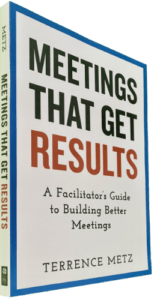Using the principles of facilitative leadership, novice facilitators will succeed when they draw a line of sight from the meeting deliverable to the quality of life of the meeting participants.
To understand “facilitative leadership,” begin by understanding the two terms: ‘facilitative’ and ‘leadership’. For example, the root term for ‘facilitative’ means “to make easy.” Therefore, the role of a meeting leader primarily relies on making it easier for their people to succeed. Leadership begins with line of sight and knowing where you are going. Assuredly, a leader needs to know the destination and focus on reaching milestones during the journey. For instance, in meetings and workshops, a leader needs to know what DONE looks like. In other words, they need to know the destination.
Similarly, facilitative leadership demands understanding about . . .
- How to approach group decision-making
- Importance of the holarchy (i.e., organizational goal alignment, dependencies, and reciprocities)
- The role (of the facilitator) is not as a person, but rather as a temporary position (like a referee)
- Skills such as clear speaking, precise questioning, keen observing, and active listening
- The criticality of being content-neutral; passionate about results, yet unbiased toward content
We aspire to develop understanding among our readers about the differences and challenges of becoming a facilitative leader. We seek primarily to shift the thinking of our readers from facilitation (as a noun or a static way of being) to facilitating (as a verb or a dynamic way of doing). Therefore, truly making it easier for meeting participants to make more informed decisions. Facilitating creates value because the method encourages speaking with people rather than at them. For that reason, facilitating is about creating an environment that is conducive to productivity and breakthrough. Above all, the role of the facilitator is about stimulating and inspiring people. In other words, facilitating amplifies the DNA of the modern leader.
Consequently, Learn to Overcome Challenges with Meetings
- Avoiding judgment, both positive and negative.
- Avoiding the first person singular, especially the word “I.” Therefore, putting the focus on the plurality “you” or the integral “us.”
- Being able to clearly articulate the meeting purpose, scope, deliverable, and agenda.
- Building and using an appropriate meeting design called an agenda. The agenda represents the method or how the leader will get the team from the introduction to the wrap in a consensual and expeditious manner.
- Challenging participants to make their thinking visible. Understanding that people think about symptoms, not causes.
- Constantly observing the participants’ body language or using a roll call method to further include online participants.
- Having well-built questions that avoid vagueness and ambiguity. Understanding that the meeting deliverable (call it ‘Y’) is a function of many details (call them ‘X’ for weighty issues and ‘x’ for the minor points). Therefore, Y is a function of many Xxes. Participants do not need answers. However, they need someone who knows the right questions to ask, and the optimal sequence for those questions.
- Removing distractions during the meeting, especially electronic leashes.
- Showing up for meetings prepared and that includes having properly prepared participants so that the meeting can take off running.
- Staying conscious about everything above, while carefully administering and adjusting to a method using appropriate tools to get more done faster.
- Substance over style, speaking with clarity when required (i.e., aspiring toward rhetorical precision). Realizing however that the “facilitator” role is primarily geared toward listening rather than preaching.
- Understanding there is more than one right answer and decision-making quality is sensitive to the conditions under which one solution may or may not be better than an alternative.
Nine Characteristics of the Facilitative Leadership Difference
Facilitative leadership benefits are best realized for projects and teams where the leader is coordinating competent specialists in complex situations. The best leaders are flexible because both command control and facilitative leadership have their place. Task-focused direction is required for the close oversight of tasks. Structure-focused direction works best when leading teams of experts.
| Modern Leaders | Facilitative Leaders |
|
|
|
|
|
|
|
|
|
|
|
|
|
|
|
|
|
|
When to Use Facilitative Leadership
We want you to see that facilitative leadership does not apply to all situations but is ideally suited for projects and teams where the leader is coordinating the efforts of subject matter experts. Use facilitative leadership when you have:
- An effort or project requiring breakthrough, creativity, and innovation
- Decisions requiring broad support and commitment from stakeholders
- Diverse team members who get evaluated with different performance measurement systems
- Extremely complex or sensitive decisions
- Group members who need to be self-motivated because they are working independently
- Historically hostile parties or complex bureaucracies
- Leaders operating without direct authority over some of the members
- Projects crossing multiple lines of business or departments
- Projects tied to a critical time frame
- Situations calling for leaders to be seen as neutral by all parties
- Strong subject matter experts need to align around new goals or outcomes
- Teams communicating across time zones, cultures, and organizational boundaries
Organizational Benefits of Facilitative Leadership: Improve Quality, Reduce Costs, and Optimize Timing

Facilitative Leadership Benefits
Benefits ensue both to the organization and participants. Organizations that deploy skilled facilitators have allocated resources to ensure the success of their meetings.
- Ability to test for the quality of the deliverable before the meeting concludes (valuable since the worst deliverable of any meeting is another meeting).
- Agendas, approaches, tools, deliverables, and outputs become more repeatable and consistent.
- Analysts obtain higher quality, more comprehensive information.
- As context is carefully managed, teams focus on higher-quality content.
- As stakeholders’ ideas are included, meetings become more collaborative and innovative.
- Facilitative leadership makes it easier to develop new leaders.
- Faster results: Facilitated sessions accelerate the capture of information, especially if the meeting participants arrive knowing the questions and issues that need to be discussed.
- Fewer omissions—projects accelerate with increased clarity and reduced uncertainty.
- Greater commitment and buy-in from all stakeholders.
- Higher quality results: groups of people make higher quality decisions than the smartest person in the group. Facilitated sessions encourage the exchange of different points of view enabling the group to identify new options, and it is a proven fact that people or groups with more options at their disposal make higher-quality decisions.
- Increased return-on-meeting time and investment.
- Modern leaders who have been successful with their existing style accrue additional benefits from the increased flexibility of adapting a facilitative style.
- More coherent communication among workshop participants, project, steering, and dependent teams.
- Properly facilitated sessions lead to innovation because multiple perspectives generate a richer (360-degree) understanding.
- When staff is treated as collegial, commitment and motivation increase.
- With assertive structure and facilitation, quality dialogue becomes the focus.
- Witness a decline in smart people making dumb decisions.
Six Personal Benefits of Improving Your Facilitative Leadership and Meeting Skills
As you increase your facilitative leadership skills, you and your team participants will become more successful. For example, let us consider six substantial areas of success for improving your facilitative leadership and meeting in more detail:
Properly facilitated, participants understand both WHAT is decided and WHY. Since groups are capable of generating more options than the aggregate of individuals, they arrive at higher-quality decisions that are capable of reconciling seemingly contrary points of view.
-
Flexibility and Breaking through Stalemates and Deadlocks
Structured approaches afford a higher degree of flexibility than approaches without structure. With structure and topical flow, meetings can take the “scenic route” because there is a backup plan to provide a respite from the stream-of-consciousness approach taken by unstructured meetings. By exploring newly created options and challenging working assumptions, teams can break through their stalemates and deadlocks by rediscovering common ground or by creating options during the meeting that did not walk into the room at the start of the meeting.
-
Impactful Groups through Improved Working Relationships
Conflict becomes responsibly managed rather than ignored. Complex issues may be addressed face-to-face as they should, rather than through a series of e-mails and innuendo. Proper facilitation will demonstrate the opportunity and method for discovering win-win solutions. Consequently, as stakeholders’ ideas are sought, meeting activity becomes more collaborative and innovative.
-
Integral Decision-Making
Defined as better alignment with organizational goals and objectives. Structured decision-making must appeal to organizational goals and objectives supported by the meeting; typically, the project, program, business unit, and enterprise. Alignment with the “holarchy” perspective ensures that proposed actions are appropriate and supports prioritization based on the impact of proposed changes across the entire enterprise. Therefore, effective decision-making reflects the integral perspective.
-
Knowledge Transfer and Increased Organizational Effectiveness
Learning organizations understand the need and power behind the transfer of knowledge from those who know to those who do not know, but should. Facilitated environments provide the opportunity for challenge, reflection, and documentation that underlies shared understanding and amplifies organizational effectiveness. Facilitative leadership also makes it easier to develop new leaders.
-
Saving Time and Increased Personal Effectiveness
Session leaders (aka facilitators) will get more done faster. As staff is treated as colleagues, commitment, and motivation increase. By becoming an expert on methods and tools rather than content, they can continue to use tools that generate consistent and repeatable results. Meetings only fail because either the participants do not have the talent, do not have the motivation, or do not know how. The role of the facilitative leader shows them how.
______
Don’t ruin your career by hosting bad meetings. Sign up for a workshop or send this to someone who should. MGRUSH workshops focus on meeting design and practice. Each person practices tools, methods, and activities daily during the week. Therefore, while some call this immersion, we call it the road to building high-value facilitation skills.
Our workshops also provide a superb way to earn up to 40 SEUs from the Scrum Alliance, 40 CDUs from IIBA, 40 Continuous Learning Points (CLPs) based on Federal Acquisition Certification Continuous Professional Learning Requirements using Training and Education activities, 40 Professional Development Units (PDUs) from SAVE International, as well as 4.0 CEUs for other professions. (See workshop and Reference Manual descriptions for details.)
Want a free 10-minute break timer? Sign up for our once-monthly newsletter HERE and receive a free timer along with four other of our favorite facilitation tools.
______
With Bookmarks no longer a feature in WordPress, we need to append the following for your benefit and reference
- 20 Prioritization Techniques = https://foldingburritos.com/product-prioritization-techniques/
- Creativity Techniques = https://www.mycoted.com/Category:Creativity_Techniques
- Facilitation Training Calendar = https://mgrush.com/public-facilitation-training-calendar/
- Liberating Structures = http://www.liberatingstructures.com/ls-menu
- Management Methods = https://www.valuebasedmanagement.net
- Newseum = https://www.freedomforum.org/todaysfrontpages/
- People Search = https://pudding.cool/2019/05/people-map/
- Project Gutenberg = http://www.gutenberg.org/wiki/Main_Page
- Scrum Events Agendas = https://mgrush.com/blog/scrum-facilitation/
- Speed test = https://www.speedtest.net/result/8715401342
- Teleconference call = https://youtu.be/DYu_bGbZiiQ
- The Size of Space = https://neal.fun/size-of-space/
- Thiagi/ 400 ready-to-use training games = http://thiagi.net/archive/www/games.html
- Visualization methods = http://www.visual-literacy.org/periodic_table/periodic_table.html#
- Walking Gorilla = https://youtu.be/vJG698U2Mvo

Terrence Metz, president of MG RUSH Facilitation Training, was just 22-years-old and working as a Sales Engineer at Honeywell when he recognized a widespread problem—most meetings were ineffective and poorly led, wasting both time and company resources. However, he also observed meetings that worked. What set them apart? A well-prepared leader who structured the session to ensure participants contributed meaningfully and achieved clear outcomes.
Throughout his career, Metz, who earned an MBA from Kellogg (Northwestern University) experienced and also trained in various facilitation techniques. In 2004, he purchased MG RUSH where he shifted his focus toward improving established meeting designs and building a curriculum that would teach others how to lead, facilitate, and structure meetings that drive results. His expertise in training world-class facilitators led to the 2020 publication of Meetings That Get Results: A Guide to Building Better Meetings, a comprehensive resource on effectively building consensus.
Grounded in the principle that “nobody is smarter than everybody,” the book details the why, what, and how of building consensus when making decisions, planning, and solving problems. Along with a Participant’s Guide and supplemental workshops, it supports learning from foundational awareness to professional certification.
Metz’s first book, Change or Die: A Business Process Improvement Manual, tackled the challenges of process optimization. His upcoming book, Catalyst: Facilitating Innovation, focuses on meetings and workshops that don’t simply end when time runs out but conclude with actionable next steps and clear assignments—ensuring progress beyond discussions and ideas.



